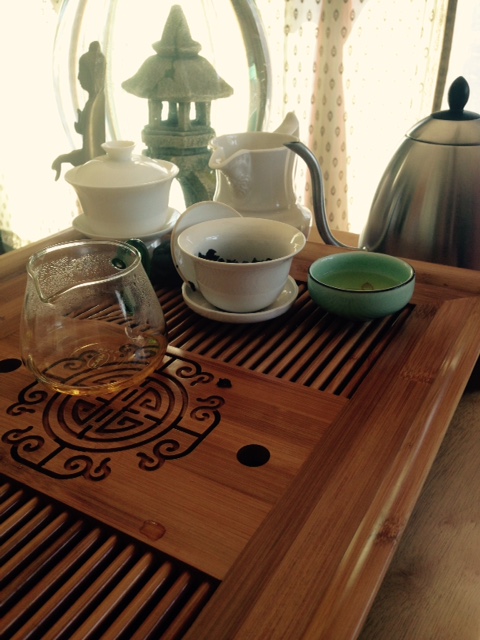 |
| Prepping for my Puerh session |
I didn't like it, that would be going too far, but as the photos show, full chai hai, full cup, empty chai hai, empty cup. I did that three times.
My stomach feels a little crampy. Interesting. I think what got me through it was I was immediately transported to a very happy time. I was thirteen and at my three week sleep-away Jewish Summer Camp up in the Saratoga Mountains of Northern California. It was night, and cold and we were all sitting around a fire-pit. I felt sexual tension, a first kiss either just around the corner or initiated earlier in the day. Oh my word, I remembered his name right now when I burped Puerh. Neil Diamond. This is all true. What weird and wonderful places the various tastes of teas have taken me so far! And it is not beyond my notice that my dreams since letting tea transport me have become much richer, more full of archetypes and mythical creations. I have even begun to read Jung!
 |
| Full. |







































